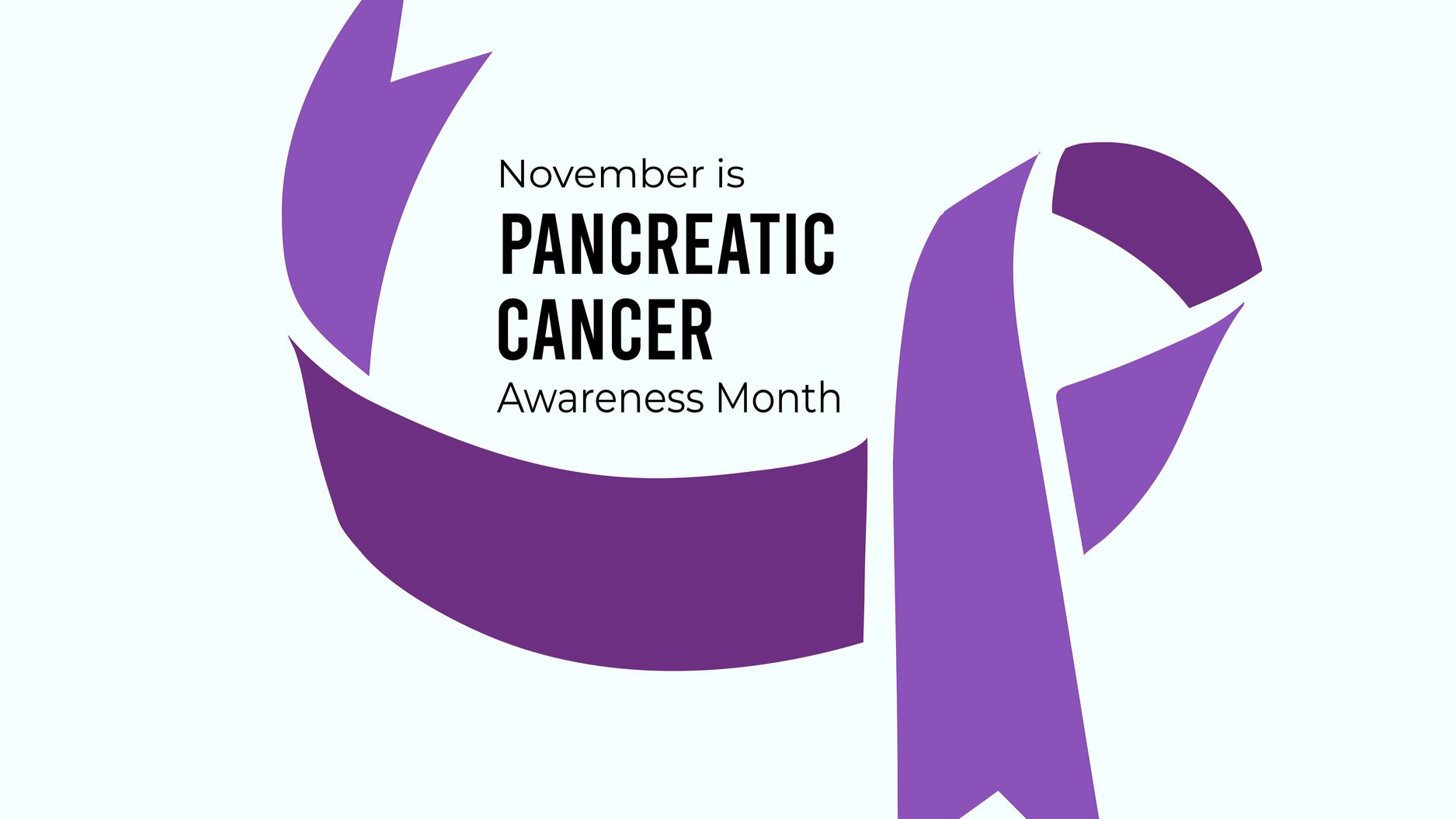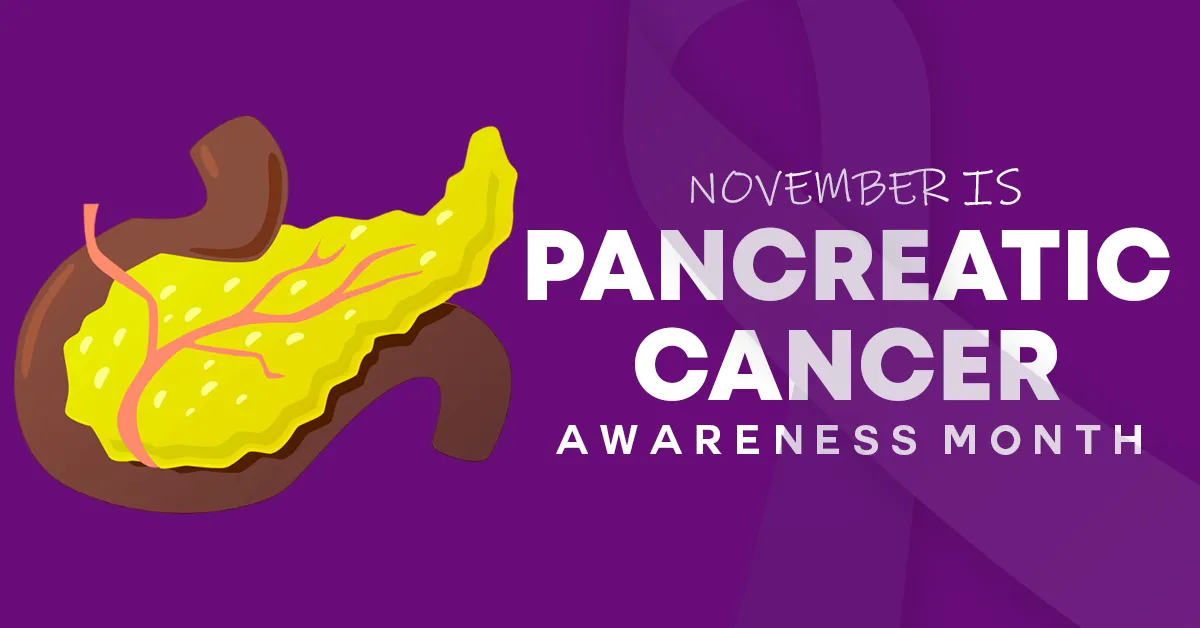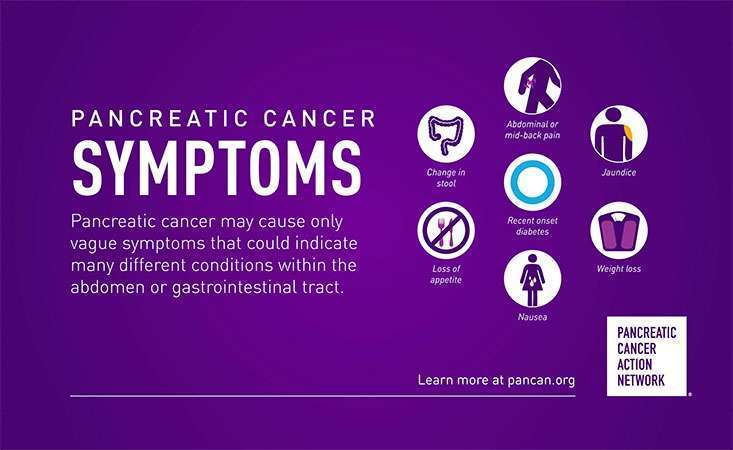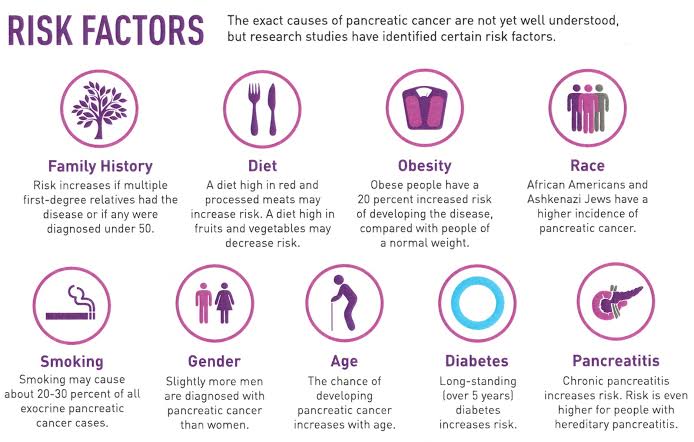Pancreatic Cancer Awareness Month: Catching the Quiet Signs Before It's Too Late

November is the time of year when the world focuses on a type of cancer that mostly hides in silence: Pancreatic cancer. It is one of the most aggressive cancers known, and part of the struggle is how silently it grows. Many people don't feel anything alarming until the cancer has already reached an advanced stage, which leaves the family in shock, scrambling for answers.

This month exists to break that silence. It is a time to inform, remind, support, and honor.
For some families, it's a month of remembrance. For others, it is a month of survival.
It is a month of awareness for one and all since awareness can catch what silence conceals.
Why Is Pancreatic Cancer So Hard To Detect?
The pancreas is an unobtrusive organ. Behind the stomach, it does its work without much fanfare, keeping blood sugar levels under control and producing enzymes to help digest food. Due to its deep-seated position, even tumors can go unnoticed for quite some time.
Most early symptoms mimic common complaints. A little indigestion. A bit of backache. Fatigue following meals. None of these things immediately suggests cancer, so people often ignore them or treat them lightly at home.
Another challenge is that there is no universal screening test for pancreatic cancer. Unlike breast cancer, which has mammograms, or cervical cancer, which has Pap smears, this cancer currently has no routine screening tool for the general public.
It is usually caught by doctors only when symptoms persist or when imaging is performed for some other problem.
That is why listening to your body becomes an important part of prevention.
The Subtle Signs You Should Never Overlook
Pancreatic Cancer Awareness Month reminds all of the need to be watchful for symptoms, especially if they are new or last longer than expected. These signs don't always signal cancer, but they do require medical attention.
Yellowing of the skin or eyes (jaundice): One of the more obvious signs that something is amiss is jaundice. If a tumor blocks the bile duct, then bilirubin will start building up in the bloodstream and cause yellowing. This yellowing may begin subtly perhaps when someone notices that their eyes look "a bit unusual." Over time, the skin follows. People may also feel itching, because the bile salts irritate the skin. When jaundice presents itself without pain or infection, doctors often check the liver and pancreas right away.
Unexplained Weight Loss: It becomes worrisome when weight loss happens at a rapid rate and is unintentional. A consequence of pancreatic cancer on digestion is the inability to properly break down food with enzymes. Thus, the absorption of nutrients is reduced. This may lead to people feeling full faster or completely losing their appetite. These types of weight loss are usually accompanied by weakness, tiredness, or changes in eating habits.
Abdominal or Mid-Back Pain: Many patients describe a dull, persistent ache in the upper abdomen that wraps around to the back. This pattern is seen because the pancreas sits very close to the spinal nerves. Pain often worsens after eating, as the pancreas becomes more active during digestion. People may also note that the pain is stronger when lying flat but is eased slightly when leaning forward.
New-onset diabetes: The pancreas is responsible for the production of insulin. If a tumor grows within the pancreas, it might affect one's insulin production and suddenly thrust them into diabetes, even if they don't have a family history of it or lead a very healthy lifestyle. Physicians nowadays pay more attention if a person above 50 years unexpectedly develops diabetes or their existing diabetes is becoming difficult to control without any other definite cause. This link is becoming one of the strongest early warning signs.
Digestive Changes: Poor digestion is due to a deficiency in pancreatic enzymes. Food could pass through the system without being digested properly, leading to discomfort, bloating, or constant nausea. Steatorrhea, or greasy, floating, pale, or foul-smelling stools, may also occur due to improper fat digestion. Patients sometimes describe their stool as "oily" or difficult to flush. These symptoms point to the pancreas struggling in its digestive role.
Dark Urine & Pale Stools: These symptoms often accompany jaundice. Dark urine results from bilirubin passing into the kidneys instead of the intestines. Pale or clay-colored stools indicate that bile no longer is reaching the digestive tract. These can occur before the skin takes on a yellow hue and should be considered as an indication for immediate medical consultation.

New Breakthroughs in Research
Pancreatic cancer remains a challenging disease, but the scientific community works in great strides. Early detection is a realistic goal for the first time, and treatments can be tailored with more precision than ever.
The Future of Early Detection
Liquid Biopsies Blood Tests: Researchers are developing blood tests that scan for certain biomarkers released by cancer cells. These tests look for circulating tumor DNA, proteins, and immune signals linked to early tumor growth.
The vision is to have a commonplace blood test, meant to flag pancreatic cancer before it ever begins to show symptoms; that could be the turning point in saving thousands of lives every year.
NOD Screening: Because sudden diabetes may indicate pancreatic cancer, researchers are working to differentiate between diabetes brought on by lifestyle and diabetes actually caused by early pancreatic tumors.
These may include advanced blood tests, imaging guidelines, and AI-assisted risk models that indicate which of the newly diagnosed patients require further testing.
AI-Enhanced Imaging: Artificial Intelligence unmasks details that the human eye would miss. AI systems have the ability to analyze CT and MRI scans for minute changes, such as small cysts, slight pancreatic duct enlargement, or other microscopic patterns that correlate with early disease.
This technology could allow doctors to catch warning signs years sooner than traditional methods.
Personalized Treatments Giving Patients New Hope
A new generation of therapies is emerging, with patients having options they didn't have ten years ago.
KRAS Inhibitors: The KRAS gene mutation is present in more than 90% of pancreatic cancers. This mutation had long been considered an impossible target. Now, KRAS inhibitors are entering clinical trials and offer treatments targeted directly to the genetic structure of the cancer. The drugs are combined with chemotherapy in most cases.
Combination Immunotherapy: The immune system frequently fails to recognize the cells of pancreatic cancer. Scientists are testing the use of combinations of immune drugs that "wake up" the immune system so it can more effectively attack tumor cells. These include combinations of checkpoint inhibitors, vaccines, and T-cell–boosting therapies.
Targeted Therapies: An increasing number of patients are receiving treatment based on the specific genetic makeup of their tumor. Similar mutations, like NRG1 fusions, BRCA mutations, and several others, now direct doctors to medicines aimed at those very targets, with an increased likelihood of response.
Advanced Drug Delivery Systems: New techniques in handling this enable doctors to deliver chemotherapy right at the tumor site, maximizing its effect while protecting the rest of the body.
Other forms of innovations are the protective shielding during radiation and nanoparticles that release drugs inside the tumor environment.
These exciting advances portend a future of earlier detection, smarter treatment, and better fight against pancreatic cancer.
The Purple Ribbon: What You Can Do This November
Pancreatic Cancer Awareness Month reminds us that small actions can safeguard lives.
Listen to Your Body: Pay attention to symptoms that linger or feel unusual. Your body often whispers before it shouts.
Know Your Risk: You may be at higher risk if you have: a strong family history chronic pancreatitis genetic predispositions long-term smoking habits If this applies to you, speak with a medical professional about screening and genetic testing.
Show Support: Research Donations, awareness campaigns, advocacy, these go a long way to accelerate scientific breakthroughs.
Live Healthily: Healthy lifestyle choices can reduce risk factors and support pancreatic function. Don't smoke, maintain a healthy weight, keep physically active and limit alcohol.

Awareness gives people the chance to act in time, though pancreatic cancer is one of the toughest diseases to face. One shared post can open someone's eyes. One conversation can prompt someone to check a symptom. One act of awareness can save a life.
You may also like...
How Religion Keeps Communities Connected Abroad

Explore how faith unites diaspora families across continents. From African churches in London to mosques in New York, di...
Mama G: The Nollywood Icon Who Never Fades

Patience Ozokwor, fondly called Mama G, is one of the most iconic names in Nollywood. When you hear that name, one thing...
The Secret Double Life of Employees

Have you ever looked at a coworker and wondered what they do after office hours? That quiet, focused colleague who seems...
Bus Sleepers Association:The Reality of 9-5 workers

Most 9-to-5 workers operate with a strange but very real sleep formula, four or five hours at home and the remaining thr...
Pancreatic Cancer Awareness Month: Catching the Quiet Signs Before It's Too Late

November is the month set aside to relate awareness for Pancreatic Cancer. This cancer is a silent killer because it is ...
Your Salary, Your Rules: Budget hacks That Actually Work

Money comes and goes, often faster than you can blink. One moment you’re excited to see your salary hit your account, an...
The Rise of Non‑Boring Workspaces

Offices are shifting from functional spaces to creative ecosystems shaped by identity, wellbeing and flexibility. Yet th...
Old vs New Fintech: Which One Keeps Your Money Safer?

Money has become more digital than ever, From paying a bike man to buying airtime to receiving salary. We now depend on ...
